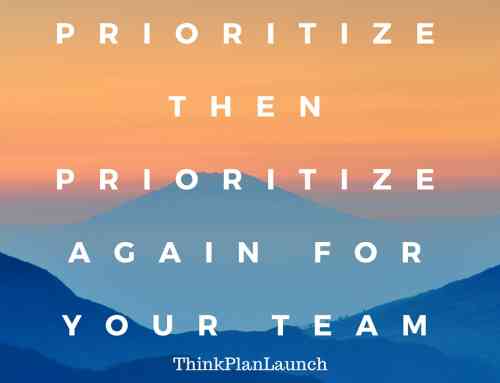Table of Contents
How to deal with difficult employees
Practically every manager has dealt with having one or more difficult employees on the team. Handling the problems created by difficult people is no fun task. Problematic employees can create a negative working environment. Also, the behavior of one bad apple can spread to the rest of the crew turning it into a very rotten situation.
The problems bad employees bring can be extremely counterproductive. Months of planning can be undone in an instant. The authority of managers can be diluted across the whole team. Other valuable employees who are bothered by the behavior of others can leave if no action is taken. This is a very real headache for managers of all levels. We look into difficult employees do to the team and offer some tips for dealing with difficult employees.
Difficult people in the office
Human nature isn’t absent from the office and it shouldn’t be suppressed. However, it is important to treat the office as a professional environment. Difficult employees act unprofessionally and it makes every manager want to fire them in an instant. If we all gave into these tendencies, we would set up the company for disaster. There are many types of difficult people in the office. Some employees are lazy. Some carry negative attitudes with them. Others engage in office politics or just don’t get along with others. There are those who are passive-aggressive, sloppy, and make up excuses for under-performing. These kinds of behaviors can get an employee on the naughty list quickly leading to stress and harm. Poor job fit from a lack of job benchmarking often creates these problematic situations. Some people, despite their list of experience and skills don’t belong there.
Worst of all are those who lie, cheat, or steal. Such behavior should not be tolerated under any circumstance. However, there are some employees who are causing problems unintentionally or from stress that they are dealing with elsewhere. In fact, there are many cases like this where good employees go bad. Some have problems at home. Some have health issues. Depression is also a common problem that many deal with and it becomes difficult for people to control. Even for managers.
A lot of advice you might uncover online for dealing with difficult employees is rooted in specific tactics for specific types. We strongly discourage managers labeling employees as a “type” of bad employee. Misdiagnosing the root cause of a person’s difficulty can make things worse. This type of behavior often is why the wrong people are hired in the first place. It can feel great to single out a person who is causing harm to the team. Vindication would feel great when chewing someone off. It might even bring some temporary satisfaction to other employees affected by the problematic person. Regardless, there are better ways to handle people who are causing problems.
Managing problematic people
The very first step to take is communication. There is nothing to be gained by saying nothing. Often this is all it will take to get to the bottom of the problem so that it can be fixed. It also lets the person in question know that their behavior is not appropriate and they are being monitored.
Start with communication
If there are more than person involved, it is wise to speak to them all. Get the facts and make record of it. You never know what will come of it later. If it is beyond your control or authority, be sure to report it to the appropriate person. Failure to right any wrong that you know about makes you responsible. Listening is key. Don’t offer any advice or opinion until you listen first, like any good manager. In many cases, communication is what caused the problem in the first place. A lot of misunderstandings can develop between people on different teams or areas of a team. A manager should be at the center of all communication. However, people do work with each other outside the meeting room and it is important to understand this. Goals and objectives on a presentation slide doesn’t translate to team members working in harmony with each other.
A manager must facilitate communication between team members. This includes making sure vital information flows between people and there are opportunities for employees to better understand each other. If there are several employees who are involved in a contention, a manager can open up a dialogue between the employees and help them work out their differences.
Preventing communication breakdown
Simple communication doesn’t always go easy. It can reveal a lot more problems than previously thought. Your first one-on-one meeting with a troubled employee should be purely for gathering information or fixing anything that can be done quickly. For problems that are more complex, careful thought must be made when engaging in the second meeting. If careful thought isn’t made in what you will say and how it is delivered, communication breakdown will occur. In fact, the delivery of communication is just as important as the content itself.
Another issue with communication is the styles of communication. Everyone has a different behavioral and communication style. How you approach someone in communication should be tailored to suit their style. Likewise, you can expect the way someone approaches you to be consistent with their own style. Knowing the styles of communication is a big advantage for managers. In many cases, by adapting your own behavior to reflect another person’s makes the unmanageable manageable. Discover the style and you will be able to better handle difficult people.
Respect is something to be earned. It translates to true authority. There are a set of people out there that have a disdain for authority. In the office, managers aren’t entitled to respect until they earn it for these people. Power and influence is achieved by many different means. Titles, however, aren’t as effective as leading by example.
When an employee is being difficult, one of the reasons is a lack of respect. The best way to prevent this is ensure a proper onboarding experience for new employees. When this fails or didn’t take place, a manager must make strides to regain respect. Consistency is the best way for a manager to regain respect. When a manager waivers, confidence is lost. This consistency should be applied to creating a strong work ethic, transparency, reward culture, and recognition of others. It also helps to have executive presence.
Holding people accountable
Whether it is personal accountability or accountability of others, managers must take action when difficult people are polluting the workforce. It is important to hold people responsible of their actions and behaviors. If all steps in communication and gaining respect fails, a manager must move on to more aggressive options. A manager is accountable for making sure that others are holding themselves accountable. When someone breaches their duties and responsibilities, a manager must set the tone and point out errors. A clear action plan must also be presented with clear objectives and expectations. This clarity becomes a binding agreement for improvement. Improvement objectives shouldn’t be seen as punishment and shouldn’t be any more stringent than what is expected of other employees.
If an employee fails, even with assistance, to meet their performance goals (which can include behavior and attitudes), and employee must be deemed unfit for the role. This is a last resort, but letting an employee go might be the best option.
Of the many types of bad employees, the ones that bring others down with them is the most dangerous. Sacrificing one for the good of many is a tough choice, but, in a competitive world, keeping the best talent is a high priority. Letting someone go also gives other employees something to consider when they are contemplating doing something bad. Consequences are real and have been enforced.
Strive for a model workplace
One thing to takeaway from all of this is that a workplace is full of different people with different goals and different values. What motivates one might not motivate another. With all of these differences in the workplace, a manager must always try to achieve balance. Rules, expectations, norms, basically, a culture must bred. Differences should always be respected in a workforce but a singular vision must be embraced.
Bad employees result from those who are on the outside of this culture. What is acceptable and what isn’t acceptable becomes more clear when this culture takes hold and becomes strong. By building a strong workplace culture, bad employees have more than a disciplinary meeting to tip them off that they are in the wrong. Other employees become the voice of the model employee in a model workplace.
If you have any other tips to add, feel free to tell us in the comments below.




Leave A Comment